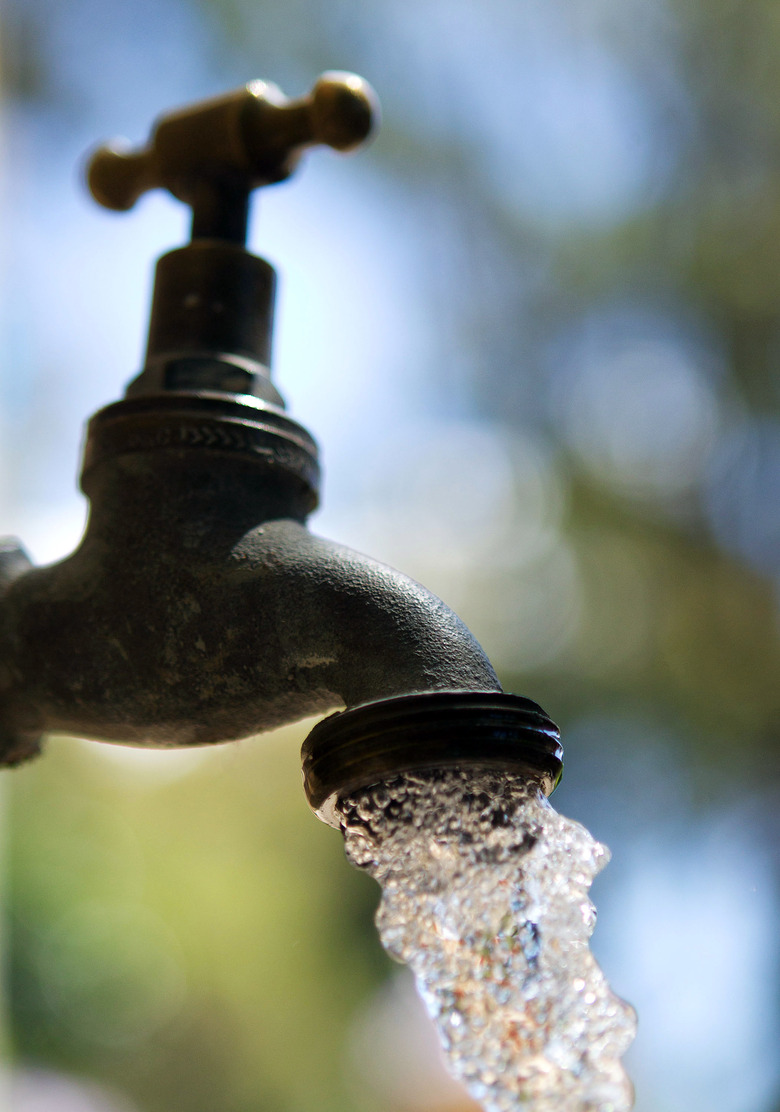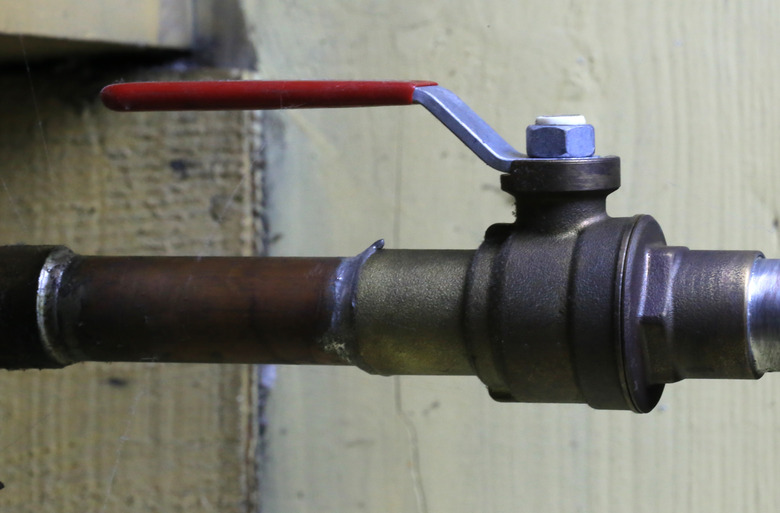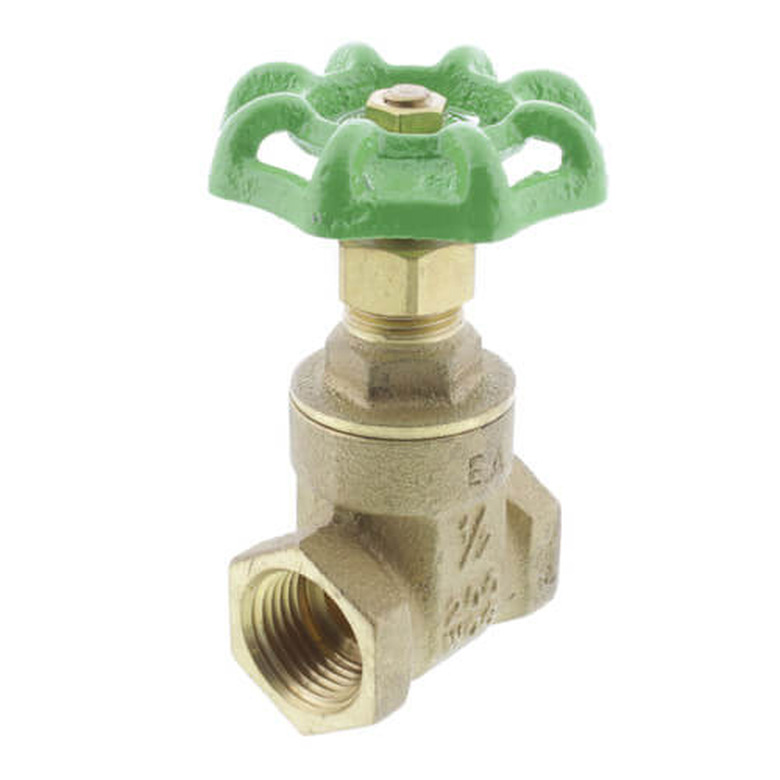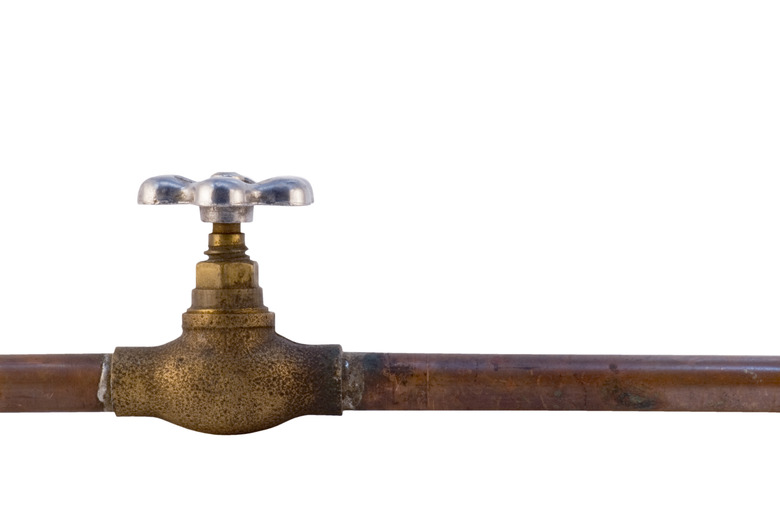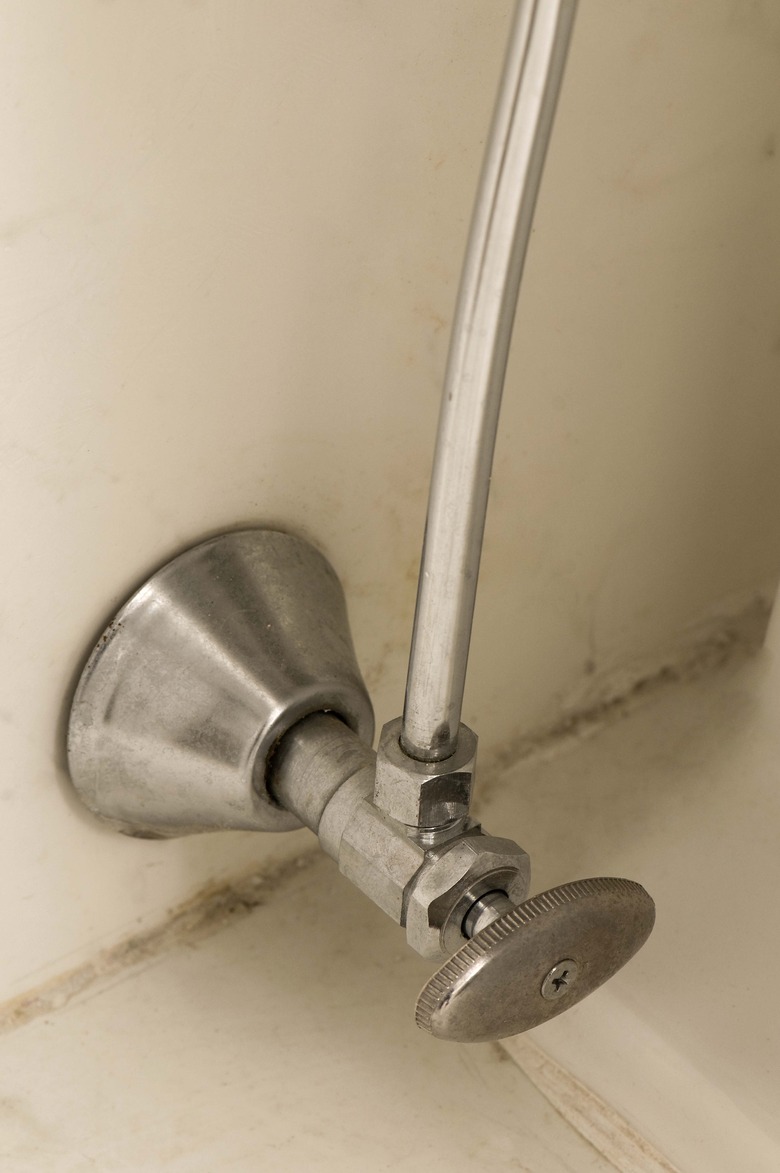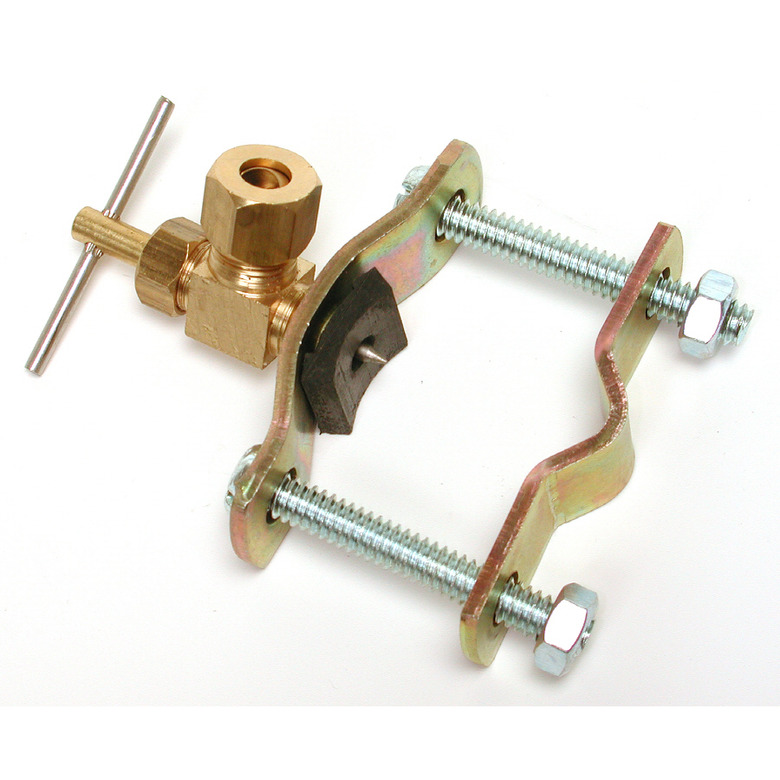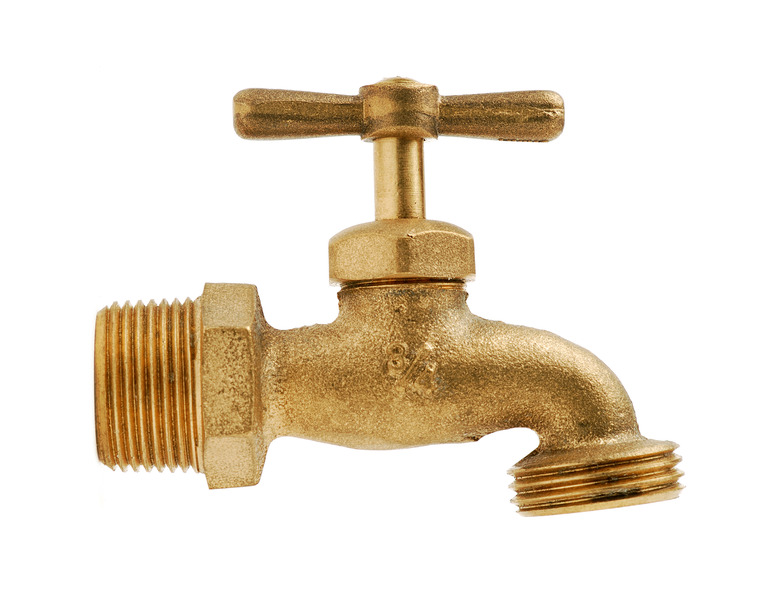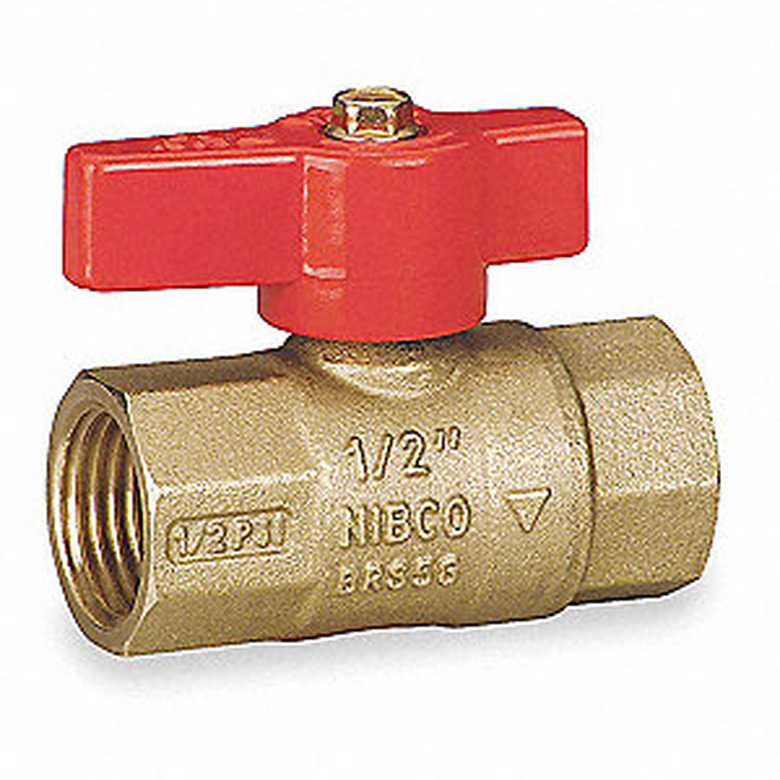A Homeowner's Guide To Valves
Plumbing valves in the home have one job to do: control the flow of water (or gas). There are several different types of valves, and they differ primarily in how they control water flow. Some turn the water on and off very quickly, while others are slow to change the flow, and that's by design. Perhaps surprisingly, most valves are designed to be all the way on or all the way off; if you use them frequently for adjusting the flow, they can wear out prematurely. With the exception of faucets (a special type of valve) and hose bibs, all of the valves in a house are shutoff valves, meaning they are there to supply or restrict water flow to a specific part of the plumbing system.
Valve Design
Valve Design
All of the plumbing valves in a home typically have one of three basic designs. The most common (in modern homes) is the ball valve. Inside a ball valve is a smooth metal ball with a big hole in its center. Turning the valve handle (usually a lever) parallel to the pipes rotates the ball so the hole is aligned with the flow direction, allowing for full flow. Tuning the handle 1/4-turn—so it is perpendicular to the piping—shuts off the flow completely. Ball valves are extremely reliable and are designed to be all the way on or off.
Next up is the gate valve, which has a knob-style handle that rotates to raise or lower a metal gate inside the valve to control the water flow. Gate valves can corrode over time and are less reliable than ball valves, but they offer a key advantage: they open and close the water flow gradually so there's no risk of water hammer (pipes banging due to abrupt changes in water flow). Like ball valves, gate valves should be all the way on or all the way off.
The third common type is the globe valve. It has a knob-style handle and looks similar to a gate valve but may have a more bulbous body. This is the only type designed for regular, partial adjustment of water flow, making it more like a faucet than the other valve types. Globe valves limit water flow even when fully open, so they're not used for most applications where shutoff valves are required. They also don't last as long as ball or gate valves.
Main Shutoff Valve
Main Shutoff Valve
Most homes have a main shutoff valve, usually located in the basement or crawlspace, near where the water supply pipe from the utility meter comes up through the ground or in through a foundation wall. This valve controls the water supply to the entire house. Main shutoffs in older homes may be gate valves, but in newer homes, they're usually ball valves. If you have a ball valve, you can tell whether the water is on of off by looking at the handle: parallel to the pipe means on; perpendicular means off. When opening a main shutoff valve, especially a ball valve, always turn the valve slowly to prevent undo stress on the home's plumbing system.
Fixture Shutoff Valve
Fixture Shutoff Valve
Water supply pipes serving faucets, toilets, washing machines and other water-using appliances should have individual shutoff valves located close to the fixture or appliance. These valves make it convenient to shut off the water to the fixture for repairs or replacement. If a fixture doesn't have them, you have to use the main shutoff valve to turn off the water to the entire house. Shutoff valves for sinks and toilets usually are small and either straight or 90-angle types (called angle stops) and have football-shaped oval handles or straight levers.
Shutoffs for washing machines often are combined with hose bib fittings for connecting the machine's water hoses. Hot water heaters have a single shutoff valve on the cold-water pipe feeding the heater; these typically are standard ball valves.
Saddle Valve
Saddle Valve
A saddle valve is a simple shutoff valve integrated with a clamping mechanism that fits around a water pipe and usually has a small metal bar for a handle. Its most common application is on a cold-water supply pipe where it taps into the supply to feed a small water line for refrigerator ice makers, water filtration systems, evaporative coolers and similar low-demand devices. To install a saddle valve, you clamp the valve onto the host pipe, then you turn the handle all the way down. This drives a sharp, needle-like tube through the wall of the host pipe to tap into the water flow (much like a syringe draws blood from a vein in your body). Saddle valves should be fully open or closed and are notorious for leaking. For this reason, they should not be installed in concealed spaces.
Hose Bib
Hose Bib
A hose bib is an outdoor faucet used to connect your garden hose. Also called a sillcock or spigot, a hose bib is a valve with a threaded faucet spout. Conventional hose bibs usually are globe valves, while frost-free, or freezeproof, versions work more like traditional compression-style faucets with rubber washers that press down against a valve seat. Frost-free versions have a long, straight section of pipe that extends into the house and contains a rod and a rubber stopper head on the house end. The stopper shuts off the water at the house end of the pipe, while the remaining water drains out through the faucet end. This prevents freezing and splitting of the pipes by separating the water supply from the cold, exposed end of the faucet.
Gas Shutoff Valve
Gas Shutoff Valve
Gas shutoff valves are required on individual gas supply lines feeding gas appliances and heating equipment. You can find them near hot water heaters, furnaces, fireplaces, ranges, cooktops, clothes dryers and barbecue grills. Most are brass ball valves and have either a plastic lever handle (usually red) or a metal tab that you turn with a wrench. They provide the same function as water fixture shutoffs, allowing you to shut off the gas to an individual appliance rather than the entire house. But gas valves are also critical safety features. If, for example, you have a leak somewhere in an appliance, you can close the appliance's shutoff valve to stop the leaking gas.
